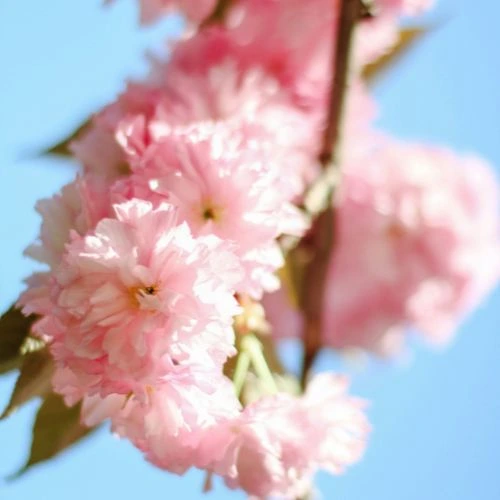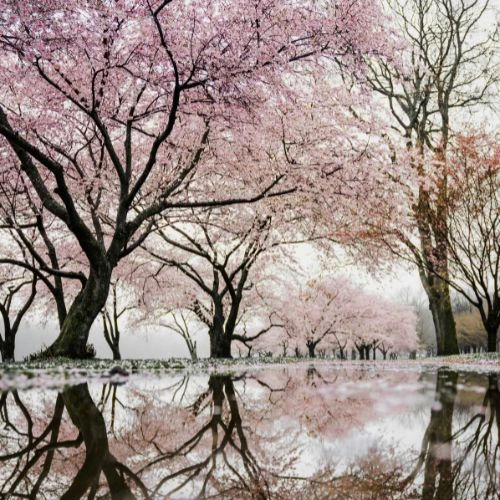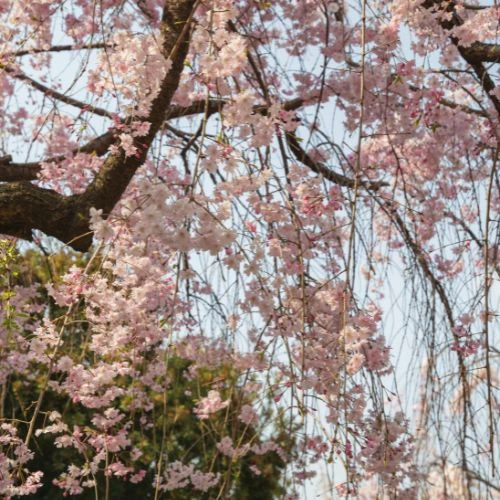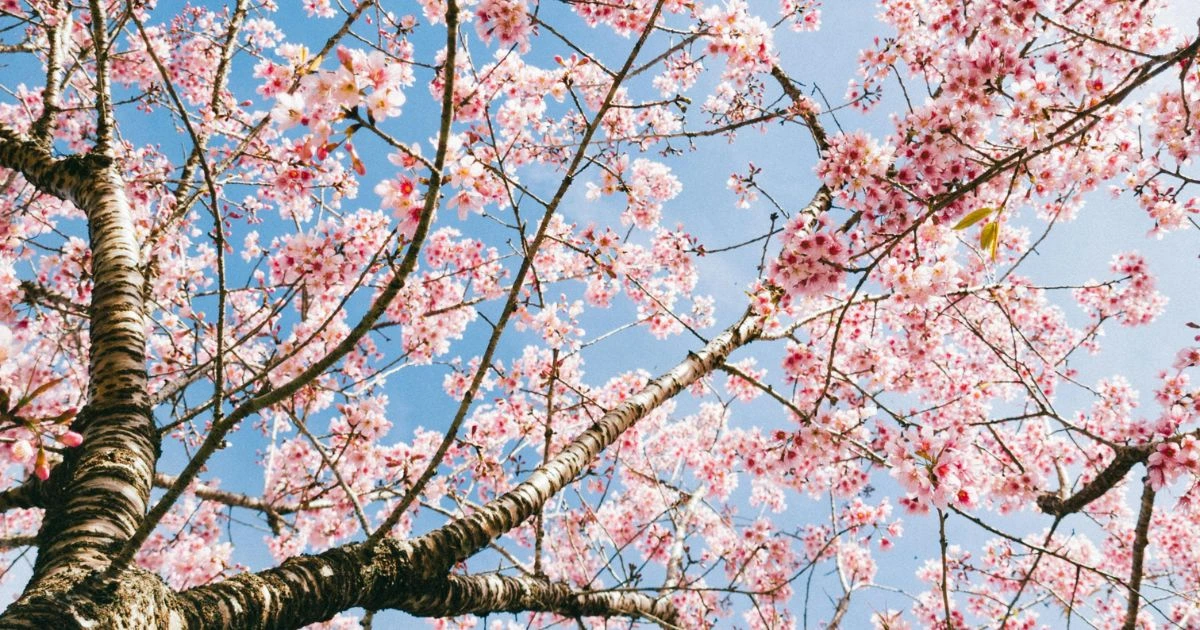In This Article
Why the Weeping Cherry Flowering Tree is a Must-Have for Your Garden
Imagine stepping into your garden and being greeted by a cascade of delicate blossoms swaying gracefully in the breeze. The weeping cherry flowering tree is more than just a tree—it’s a showstopper that adds charm and elegance to any landscape. Known for its striking blooms, flowing branches, and multi-seasonal beauty, this tree is the perfect way to transform your outdoor space into a serene haven. In this guide, you’ll discover everything from planting tips to fascinating facts about this incredible tree.
| Common Name | Weeping Cherry Flowering Tree |
| Botanical Name | Prunus subhirtella |
| Family | Rosaceae |
| Plant Type | Deciduous Ornamental Tree |
| Mature Size | 20-30 feet tall, 15-25 feet wide |
| Bloom Time | Early to Mid-Spring |
| Toxicity | Toxic to pets (seeds, bark, leaves) |
| Sun Exposure | Full Sun |
| Soil Type | Well-drained, loamy soil |
| Soil pH | Slightly acidic to neutral (6.0-7.0) |
| Flower Color | Pink or White |
| Hardiness Zones | USDA Zones 5-8 |
| Native Area | Japan |
What is a Weeping Cherry Flowering Tree?
The weeping cherry flowering tree is a stunning ornamental tree known for its gracefully arching branches and breathtaking blooms. Its drooping silhouette, often adorned with soft pink or white blossoms in spring, creates an enchanting focal point in any garden. These trees are as much about elegance as they are about bringing natural beauty to your landscape.
Originating in Japan, the weeping cherry flowering tree holds deep cultural significance, symbolizing renewal, hope, and the fleeting beauty of life. In Japanese tradition, these trees are often planted in gardens, parks, and temples, where they serve as a reminder of nature’s transient beauty.
Several varieties of the weeping cherry flowering tree are popular among gardeners in the USA, each with its own unique charm. The Snow Fountain variety is compact and ideal for smaller gardens, producing cascading white blooms. For those who love the romantic look of pink flowers, the Pink Weeping Cherry is an excellent choice, bringing vivid color to springtime landscapes. The Higan Cherry variety, meanwhile, is highly adaptable and hardy, thriving in diverse climates.
This tree isn’t just about aesthetics—it also invites wildlife into your garden. Bees, butterflies, and birds are naturally drawn to the blossoms, adding vibrancy and life to your outdoor space.
With its unique form and seasonal appeal, the weeping cherry flowering tree is more than just a plant; it’s a statement of style and serenity. Whether you’re enhancing a small backyard or a large garden, this tree is an ideal choice for gardeners looking to combine low maintenance with high impact.



Why Choose a Weeping Cherry Flowering Tree for Your Garden?
Adding a weeping cherry flowering tree to your garden offers more than just beauty—it brings multiple benefits that make it a standout choice for landscaping enthusiasts.
1. Unmatched Beauty:
The graceful, arching branches and delicate blossoms create a stunning display. During spring, its flowers bloom in clusters, transforming your garden into a magical retreat. Its ornamental appearance ensures it’s the star of any landscape.
2. Low Maintenance:
Unlike some high-maintenance ornamental trees, the weeping cherry flowering tree is relatively easy to care for. With minimal pruning and basic watering, it can thrive for years, making it a perfect choice for busy gardeners.
3. Seasonal Interest:
This tree offers visual interest throughout the year. In spring, it dazzles with vibrant blossoms; in summer, it boasts lush green foliage; in fall, its leaves turn golden, providing a multi-seasonal spectacle. Even in winter, its bare, arching branches add structural elegance to your garden.
4. Wildlife Attraction:
If you love seeing nature up close, the weeping cherry flowering tree is a magnet for birds, bees, and butterflies. These creatures are drawn to its blossoms, enriching your garden’s ecosystem while enhancing its liveliness.
5. Versatility:
Whether you have a sprawling yard or a compact garden, there’s a variety of this tree that fits your space. Its compact varieties, like the Snow Fountain, are ideal for small gardens or as patio centerpieces.
Incorporating a weeping cherry flowering tree into your garden not only elevates its aesthetic appeal but also brings life and versatility to your outdoor space. Its combination of beauty, low maintenance, and ecological benefits makes it a must-have for garden enthusiasts.
How to Plant a Weeping Cherry Flowering Tree
Planting a weeping cherry flowering tree is straightforward, provided you follow a few essential steps to ensure it thrives. With the right location and proper care, you’ll soon enjoy its graceful beauty in your garden.
Choosing the Right Spot:
The first step is selecting the perfect location. The weeping cherry flowering tree flourishes in full sun, so choose an area with at least six hours of direct sunlight daily. Moreover, It requires well-draining soil to prevent root rot. Avoid planting in low-lying spots where water tends to collect.
When to Plant:
The ideal time to plant a weeping cherry flowering tree is early spring or fall when the weather is cooler, and the tree can establish its roots before extreme heat or frost.
Planting Instructions:
- Dig a hole twice as wide and slightly deeper than the tree’s root ball.
- Place the tree upright in the hole, ensuring its graft union (the knobby part near the base) sits slightly above ground level.
- Backfill with soil, gently firming it to eliminate air pockets.
- Water the tree thoroughly to help settle the soil.
- Add a layer of mulch around the base, leaving space around the trunk to prevent rot.
Companion Plants:
Enhance your garden’s beauty by planting low-growing companions like lavender, dwarf hydrangeas, or ornamental grasses around your tree. These add contrast and texture while complementing the elegance of the weeping cherry flowering tree.
By following these steps, you’ll set your tree up for success, ensuring it grows healthy and strong while enhancing your garden’s appeal.
Caring for Your Weeping Cherry Flowering Tree
Maintaining a weeping cherry flowering tree is simple and rewarding. With proper care, your tree will thrive and remain a stunning centerpiece in your garden for years.
Watering:
Newly planted trees require consistent watering, typically once a week or whenever the soil feels dry about an inch below the surface. Once established, the tree becomes more drought-tolerant, needing less frequent watering.
Fertilizing:
Feed your tree in early spring with a balanced fertilizer to support healthy growth and vibrant blooms. Avoid over-fertilizing, as it can lead to excessive foliage and fewer flowers.
Pruning:
Pruning is crucial to maintaining the tree’s iconic shape and health. Remove dead or diseased branches in late winter or early spring before new growth begins. Trim any suckers (shoots growing from the base) regularly to keep the tree’s energy focused on its canopy.
Pest and Disease Management:
While the weeping cherry flowering tree is generally hardy, it may attract aphids or spider mites. Treat infestations with neem oil or insecticidal soap. Watch for signs of fungal diseases like leaf spot, and remove affected leaves promptly.
By providing consistent care and monitoring for potential issues, your weeping cherry flowering tree will flourish, enhancing your garden with its year-round beauty.
Common Problems and How to Fix Them
Even though the weeping cherry flowering tree is relatively low-maintenance, it can encounter issues that affect its health and appearance. Identifying these problems early and addressing them promptly will keep your tree thriving.
1. Yellowing Leaves:
Yellow leaves are often a sign of overwatering or poor drainage. Ensure the soil drains well and avoid waterlogging. If the problem persists, improve drainage by aerating the soil or adding organic matter.
2. Lack of Blooms:
When a weeping cherry flowering tree fails to bloom, the likely culprits are insufficient sunlight, improper pruning, or over-fertilizing. Ensure the tree gets at least six hours of sunlight daily, prune after blooming to avoid cutting off flower buds, and use a balanced fertilizer sparingly.
3. Pest Infestations:
Common pests like aphids, spider mites, and caterpillars can harm your tree. Watch for signs such as curled leaves, webbing, or chewed foliage. Combat pests with natural remedies like neem oil or insecticidal soap, and encourage beneficial insects like ladybugs to act as natural predators.
4. Fungal Diseases:
Fungal infections like black knot or leaf spot can weaken your tree. Prune and dispose of infected branches immediately to prevent spread. Applying a fungicide early in the season can also be effective.
5. Root Rot:
Root rot occurs in overly wet soil and leads to wilting or stunted growth. Address this by improving drainage and ensuring the soil remains moist but not saturated.
By staying vigilant and taking proactive measures, you can resolve most issues quickly, ensuring your weeping cherry flowering tree remains healthy and vibrant. Regular monitoring and basic care go a long way toward keeping it a stunning feature in your garden.
Fascinating Facts About the Weeping Cherry Flowering Tree
The weeping cherry flowering tree is not just beautiful but also fascinating. Here are some fun facts that make this tree even more special:
- Symbol of Renewal: In Japanese culture, the blossoms represent renewal, hope, and the fleeting nature of life.
- Multi-Seasonal Appeal: While known for its springtime flowers, its golden autumn leaves and winter silhouette make it a year-round attraction.
- Wildlife Magnet: Birds, bees, and butterflies adore the tree, adding life and movement to your garden.
- Long-Lived Beauty: With proper care, these trees can live up to 40-50 years, making them a lasting addition to your landscape.
- Compact Varieties: Dwarf varieties like Snow Fountain are perfect for small spaces or container gardening.
- Low Water Needs: Once established, the tree requires less water compared to many other ornamental species.
- Unique Growth Habit: Its cascading branches create a dramatic look, making it a focal point in any garden design.
The weeping cherry flowering tree is not just a plant; it’s a timeless symbol of beauty and elegance that adds character and charm to your outdoor space.
FAQs About the Weeping Cherry Flowering Tree
Q: How tall does a weeping cherry flowering tree grow?
A: Most varieties reach a mature height of 20-30 feet, although dwarf types remain much smaller.
Q: When does the weeping cherry flowering tree bloom?
A: The tree typically blooms in early to mid-spring, showcasing vibrant pink or white flowers.
Q: Can I grow a weeping cherry flowering tree in a container?
A: Yes! Dwarf varieties like Snow Fountain thrive in pots, making them perfect for patios or small spaces.
Q: Is the tree toxic to pets?
A: Yes, the seeds, bark, and leaves contain compounds that can be toxic to cats and dogs if ingested.
Q: How do I protect the tree in winter?
A: Apply mulch around the base to insulate the roots and cover young trees with burlap in harsh climates.
Conclusion
The weeping cherry flowering tree is a captivating addition to any garden, offering beauty, versatility, and low maintenance. Whether you’re a seasoned gardener or just starting, this tree is a rewarding choice for enhancing your outdoor space. Ready to learn more tips like these? Subscribe to our newsletter today for expert gardening advice and inspiration delivered right to your inbox!

